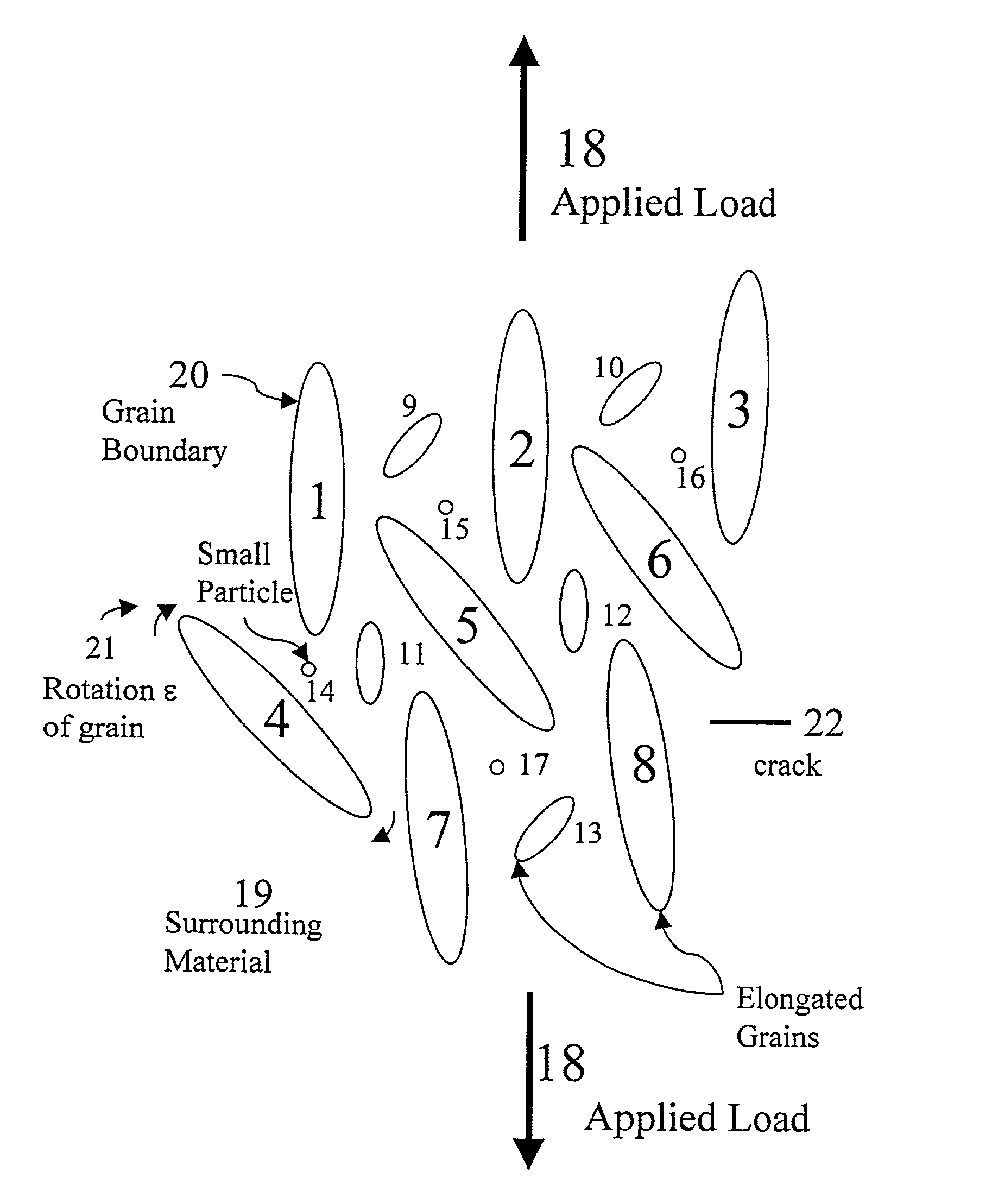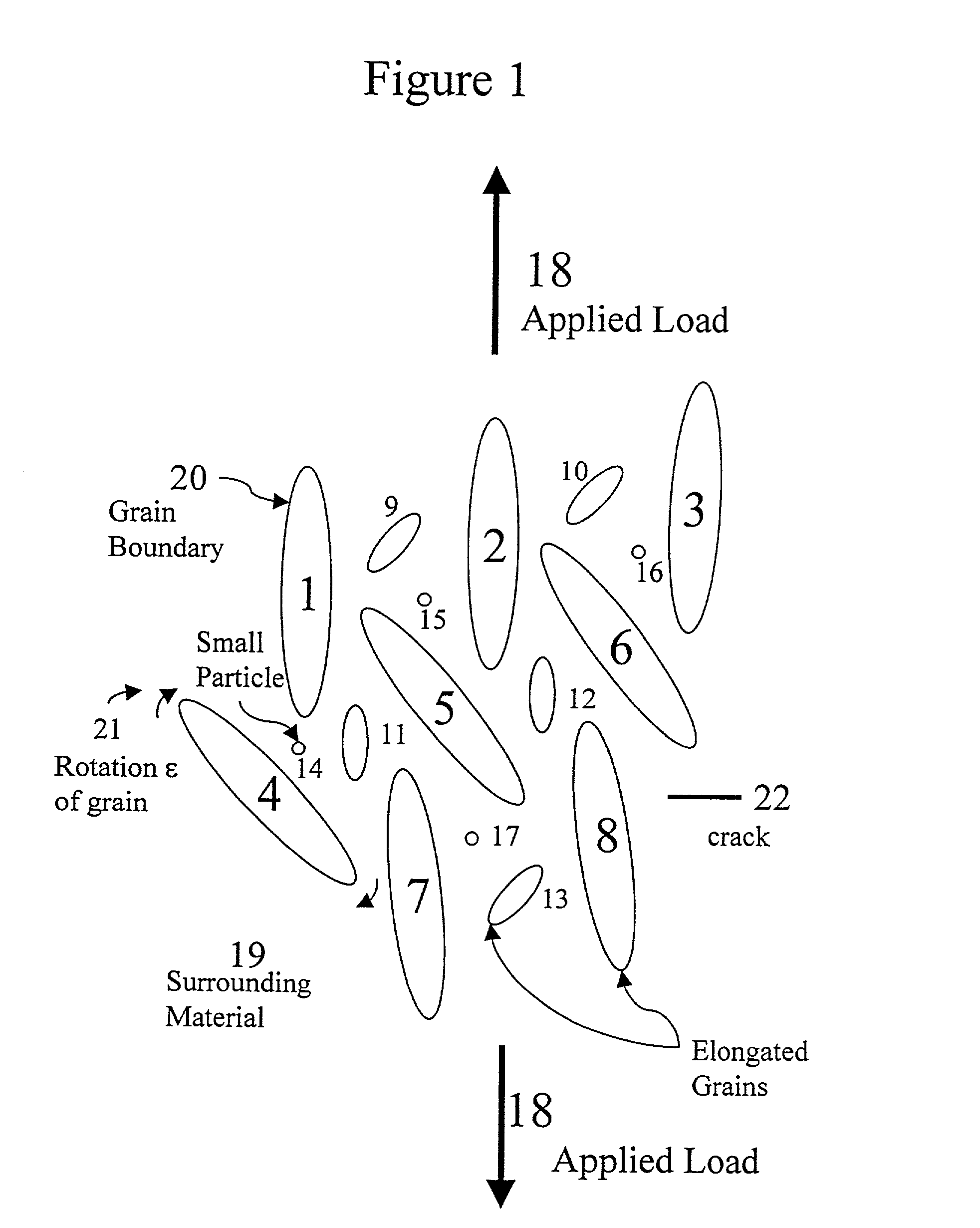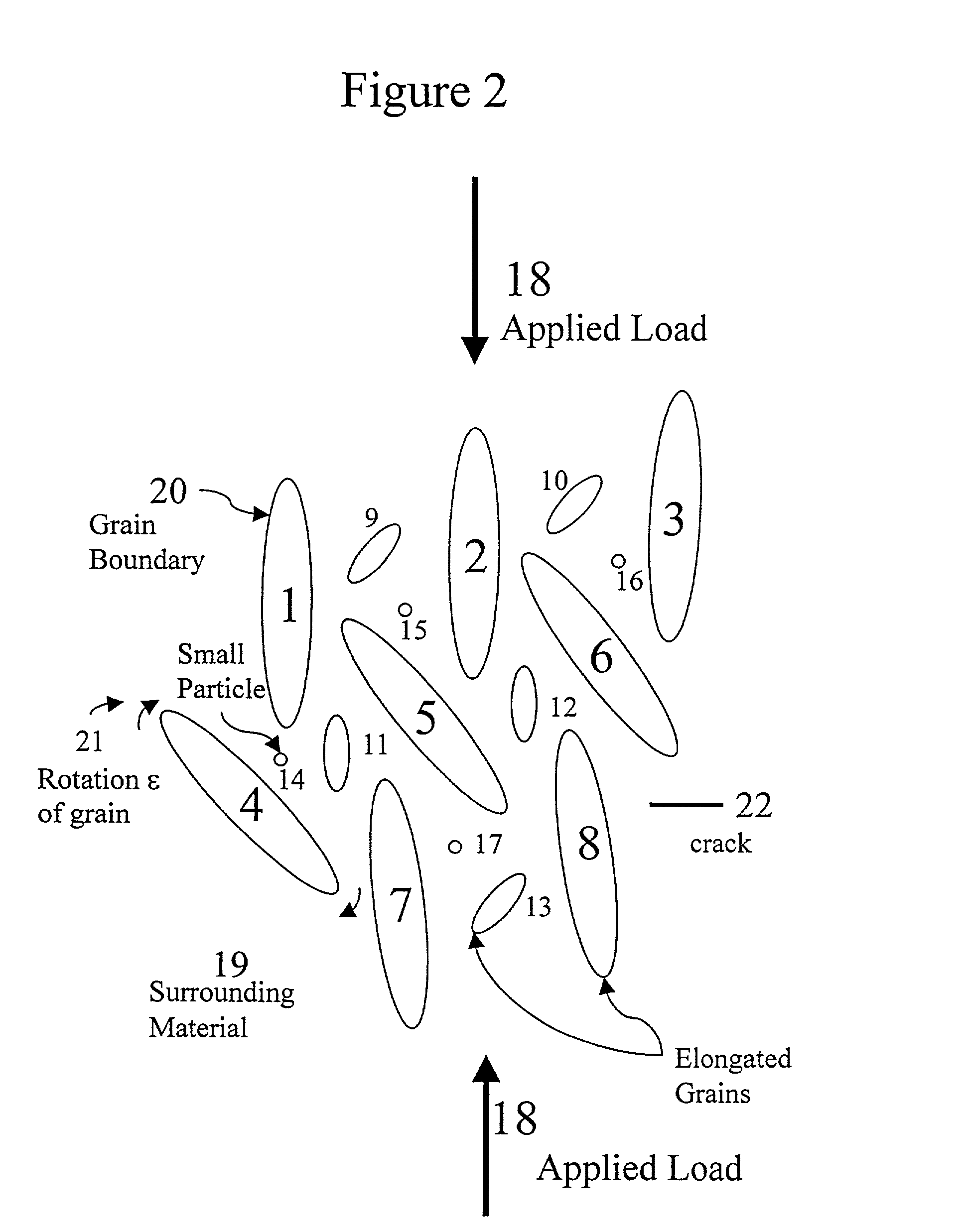Microstructure containing entities rotating under an applied load to enhance toughening against fracture
a microstructure and entity technology, applied in the field of composite materials having a microstructure model, can solve the problems of increasing the cost of composite production, entity or additive has in most cases lost its ability, and inefficient techniques, so as to reduce the amount of strain energy available, reduce the intensity of induced stress, and reduce the effect of strain energy promoting fractur
- Summary
- Abstract
- Description
- Claims
- Application Information
AI Technical Summary
Benefits of technology
Problems solved by technology
Method used
Image
Examples
Embodiment Construction
[0017]The present invention will now be described in greater detail with reference to the accompanying drawings. Referring to FIG. 1, an external or remotely applied tensile stress or load 18 is exerted upon elliptically-shaped microstructure entities or particles 1 through 17, each of which will rotate in its surrounding matrix material 19. Although microstructural entities 8 and 13 are specifically labeled as elongated grains and entity 14 as a small particle, microstructural entities 1 through 13 are similarly elongated grains and entities 14 through 17 are small particles in both FIGS. 1 and 2. As the applied load increases, an angle of rotation increases as do the induced stresses both in the matrix material and in the particles. In practice, the material discontinuity giving rise to the rotation can be a difference in the bonding and elastic properties at the particle-matrix boundary 20 itself or across the boundary.
[0018]Particles 14 to 17 may be smaller than entities 1 throu...
PUM
| Property | Measurement | Unit |
|---|---|---|
| compressive | aaaaa | aaaaa |
| tensile stress | aaaaa | aaaaa |
| strain energy | aaaaa | aaaaa |
Abstract
Description
Claims
Application Information
 Login to View More
Login to View More - R&D
- Intellectual Property
- Life Sciences
- Materials
- Tech Scout
- Unparalleled Data Quality
- Higher Quality Content
- 60% Fewer Hallucinations
Browse by: Latest US Patents, China's latest patents, Technical Efficacy Thesaurus, Application Domain, Technology Topic, Popular Technical Reports.
© 2025 PatSnap. All rights reserved.Legal|Privacy policy|Modern Slavery Act Transparency Statement|Sitemap|About US| Contact US: help@patsnap.com



